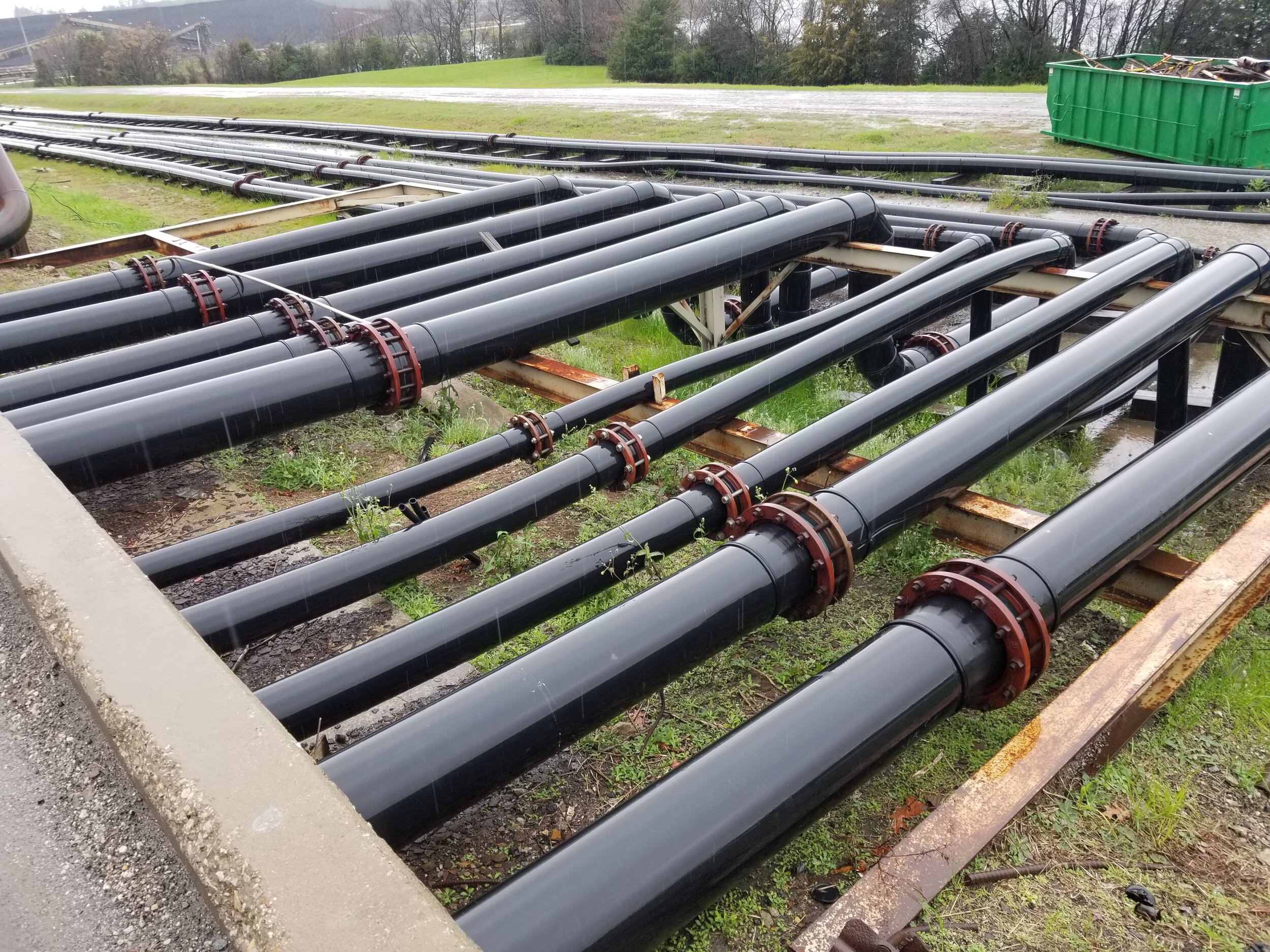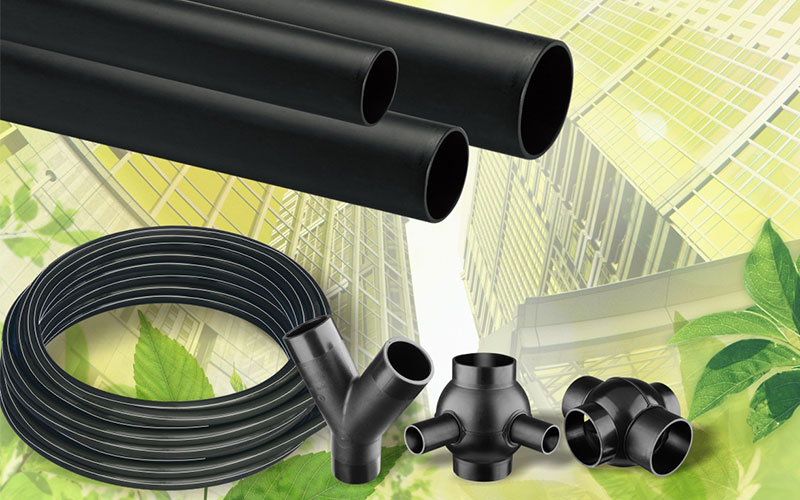Why hdpe pipe in stock Midland TX Is Essential for Local Industries
Discover the Manufacturing Refine Behind High-Quality HDPE Pipeline and Its Applications
The production procedure of high-quality HDPE pipelines is intricate and systematic. It begins with the option of basic materials that enhance performance. Following this, ethylene goes through polymerization to form material, which is then shaped via extrusion. Quality control is vital, ensuring that the end product meets strict criteria. The trip of HDPE pipelines doesn't finish with production. Their applications throughout various industries reveal a more comprehensive significance worth taking a look at.
Comprehending HDPE: Properties and Advantages

High-density polyethylene (HDPE) is a functional thermoplastic understood for its longevity and resistance to various ecological factors. This material shows superb tensile strength, making it ideal for requiring applications. Its low-density framework adds to a light-weight product, helping with simplicity of taking care of and installment. HDPE likewise showcases remarkable resistance to chemicals, which decreases deterioration when exposed to extreme compounds.
The product's low dampness absorption better boosts its long life, making it optimal for usage in pipes and tank. Additionally, HDPE is resistant to ultraviolet (UV) radiation, guaranteeing that products preserve their stability also when subjected to sunshine. Its adaptability permits for the production of intricate shapes without endangering strength. The eco-friendly nature of HDPE, commonly originated from recycled products, contributes to its appeal, promoting sustainable practices in production. On the whole, these residential or commercial properties and advantages make HDPE a recommended choice for various industrial and customer applications.
Raw Product Option for HDPE Production
The option of resources for HDPE production is necessary to validate the end product meets the desired requirements and quality standards. High-density polyethylene (HDPE) is mainly produced from polymerized ethylene, acquired from nonrenewable fuel sources such as all-natural gas or crude oil. The high quality of these feedstocks greatly influences the mechanical and thermal buildings of the final HDPE.
Ingredients additionally play a significant duty in enhancing HDPE's efficiency, including anti-oxidants, UV stabilizers, and colorants, which improve durability and resistance to ecological factors. The option procedure should think about not just the chemical make-up of the raw materials however also their processing attributes to ensure reliable production.
In addition, the sourcing of basic materials must prioritize sustainability and conformity with environmental regulations, as responsible practices are essential in today's market. Ultimately, cautious basic material option lays the foundation for producing high-quality HDPE pipes suitable for diverse applications.
The Extrusion Process: Shaping HDPE Pipeline
The extrusion process plays an important role fit HDPE pipelines, starting with careful product preparation methods that guarantee perfect flow and consistency. Just as essential is the style of the die, which directly influences the last dimensions and surface area high quality of the pipeline. With each other, these elements contribute significantly to the efficiency and quality of HDPE pipe manufacturing.
Product Prep Work Strategies
Effective production of HDPE pipes begins with precise product prep work techniques, particularly the extrusion process. During this stage, high-density polyethylene material is initial dried out to remove moisture, ensuring optimal flow attributes. The material is then fed into the extruder, where it undertakes home heating and melting, changing right into a thick state. This heating process is very carefully managed to maintain the material's honesty and performance. The molten HDPE is forced through a die, forming it into a continual pipeline form. Correct temperature management throughout extrusion is essential, as it directly affects the product's residential or commercial properties and the final product high quality. Once formed, the HDPE pipe is cooled and reduced to defined lengths, prepared for subsequent handling and applications.
Die Layout Value
Precision in die style plays an essential duty in the extrusion process of HDPE pipelines. The die acts as the last shaping device, straight affecting the pipeline's dimensions, wall density, and surface coating. A well-designed die assurances consistent product circulation, lowering defects such as irregularities and weak points. The geometry of the die must be maximized to fit the particular buildings of HDPE, including its thickness and thermal actions throughout extrusion. In addition, the cooling rate of the material as it passes via the die can markedly impact the pipe's architectural stability. Investing in innovative die technology is important for manufacturers intending to produce top notch HDPE pipes that fulfill market criteria and client assumptions.
Quality Control Steps in HDPE Production
Numerous aspects affect the quality of HDPE pipeline production, efficient top quality control measures are crucial to guarantee consistency and integrity in the last product (Texas hdpe pipe manufacturer). Secret quality assurance techniques consist of rigorous product assessment, validating that the raw polyethylene fulfills established requirements for pureness and thickness. Throughout the extrusion procedure, specifications such as temperature level, stress, and cooling time are carefully checked to preserve dimensional precision and structural honesty
Furthermore, post-production screening is essential; manufacturers often conduct hydrostatic examinations to assess the pipe's toughness and resistance to stress. Visual evaluations for surface area problems further boost quality control. Accreditation from appropriate criteria companies, like ASTM or ISO, offers an additional layer of credibility. By carrying out these comprehensive top quality control actions, producers can decrease problems, boost efficiency, and make certain that the HDPE pipes satisfy the specific needs of various applications, inevitably resulting in client fulfillment and count on in the product.
Applications of HDPE Pipe Across Industries
HDPE pipelines are utilized across different industries because of their toughness and flexibility. In water distribution systems, they click this site guarantee reliable distribution, while in wastewater management, they supply reliable options for waste transport. Additionally, farming irrigation networks benefit from HDPE's resistance to rust and flexibility, making it a suitable choice for contemporary farming techniques.

Water Circulation Equipments
A considerable number of sectors rely upon high-density polyethylene (HDPE) pipelines for effective water circulation systems. Known for their resilience and resistance to rust, HDPE pipelines are commonly used in local supply of water networks, farming watering, and commercial applications. Their light-weight nature promotes easy handling and setup, minimizing labor prices and time. In addition, HDPE pipelines can fit different pressure levels, making them suitable for both reduced and high-pressure systems. American Plastics HDPE Pipe Manufacturing. The versatility of the material enables smooth integration right into existing framework, reducing the demand for comprehensive excavation. HDPE's resistance to chemical seeping assurances that the water supplied stays risk-free and tidy, making it a perfect selection for maintaining the high quality of potable water across numerous fields.
Wastewater Monitoring Solutions
Efficient water circulation systems additionally lead the means for ingenious wastewater management remedies, where high-density polyethylene (HDPE) pipes play a considerable role. Popular for their longevity and resistance to deterioration, HDPE pipelines are optimal for carrying wastewater in numerous settings. Their versatility allows for simple installation in complex atmospheres, minimizing the need for considerable excavation. Furthermore, HDPE's smooth indoor surface area reduces friction, improving circulation prices and efficiency. These pipes are also immune to chemical leaching, guaranteeing that impurities do not jeopardize the surrounding atmosphere. Industries, municipalities, and treatment centers increasingly depend on HDPE pipes for their integrity and durability, making them a recommended selection for contemporary wastewater administration systems. This flexibility underscores the vital relevance of HDPE pipes throughout various applications.
Agricultural Irrigation Networks
Agricultural irrigation networks profit substantially from using high-density polyethylene (HDPE) pipes, which supply reliable and trustworthy water delivery to plants. HDPE pipelines are light-weight, making them very easy to carry and set up, while their versatility enables different configurations in varied surfaces. These pipes demonstrate excellent resistance to deterioration, chemicals, and UV radiation, making certain durability in severe agricultural environments. Additionally, their smooth indoor surface minimizes rubbing loss, maximizing water flow and decreasing visit our website power prices related to pumping. The long life of HDPE pipes, usually exceeding half a century, contributes to decrease upkeep and substitute expenses. Subsequently, farmers progressively rely upon HDPE pipes to enhance watering effectiveness and advertise lasting agricultural methods, inevitably bring about boosted crop yields and source preservation.
Future Fads in HDPE Pipe Innovation
As the demand for lasting and effective infrastructure expands, advancements in HDPE pipe innovation are positioned to transform various markets. Arising patterns consist of the combination of smart modern technologies, such as sensing units and IoT capabilities, which promote real-time monitoring of pipeline problems, lowering maintenance costs and protecting against leaks. Additionally, the development of innovative manufacturing techniques, such as 3D printing, is making it possible for the manufacturing of facility, customized pipeline layouts that accommodate particular task requirements.
The focus on recycling and circular economic climate techniques is driving the advancement of HDPE pipelines made from recycled products, boosting sustainability. Boosted jointing techniques, such as electro-fusion and mechanical installations, are additionally improving setup performance and reliability. Ultimately, the expanding emphasis on environmental guidelines is pressing producers to adopt greener production processes, guaranteeing that HDPE pipelines not only meet market requirements but additionally foster a more sustainable future for facilities growth.
Frequently Asked Concerns
Just How Does HDPE Contrast to Other Plastic Materials?
HDPE outperforms several other plastic materials concerning longevity, chemical resistance, and flexibility. Its low thickness and high tensile strength make it optimal for different applications, frequently surpassing options in both performance and longevity.
What Are the Environmental Influences of HDPE Manufacturing?
The ecological influences of HDPE production consist of greenhouse gas discharges, energy consumption, and potential air pollution from manufacturing procedures. Furthermore, incorrect disposal can lead to dirt and water contamination, raising issues concerning long-lasting environmental impacts.
Can HDPE Pipeline Be Reused?
Yes, HDPE pipes can be recycled. Several centers approve used helpful site HDPE for processing, changing it right into new items. This reusing contributes to sustainability initiatives, lowering plastic waste while saving sources and power in the production cycle.
What Is the Lifespan of HDPE Pipeline?

How Do Temperature Level Variations Impact HDPE Pipeline Efficiency?
Temperature variants significantly impact HDPE pipeline efficiency, affecting versatility and toughness. Heats can cause softening, while low temperatures might cause brittleness, ultimately affecting the pipe's sturdiness and suitability for numerous applications in diverse settings.